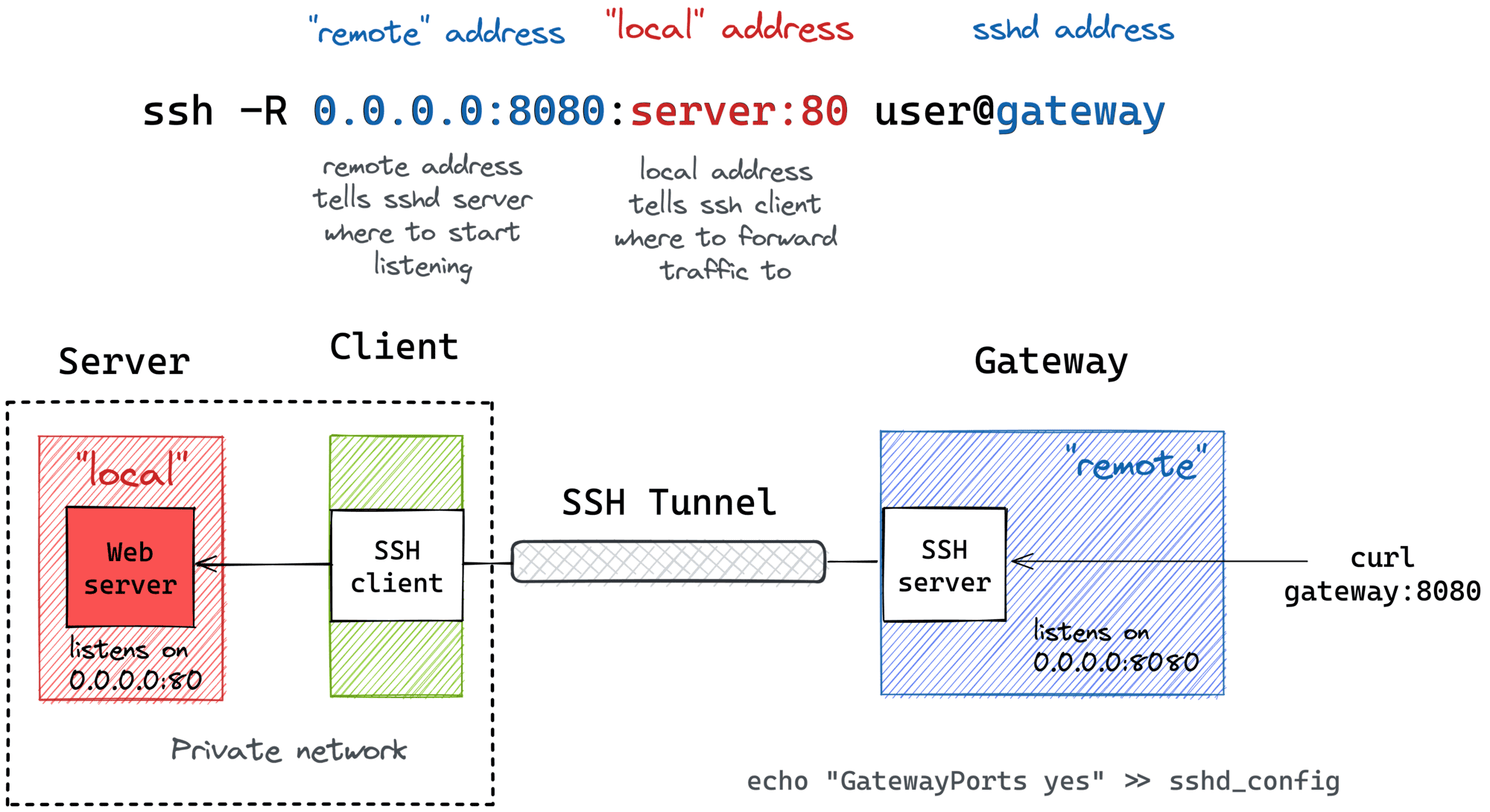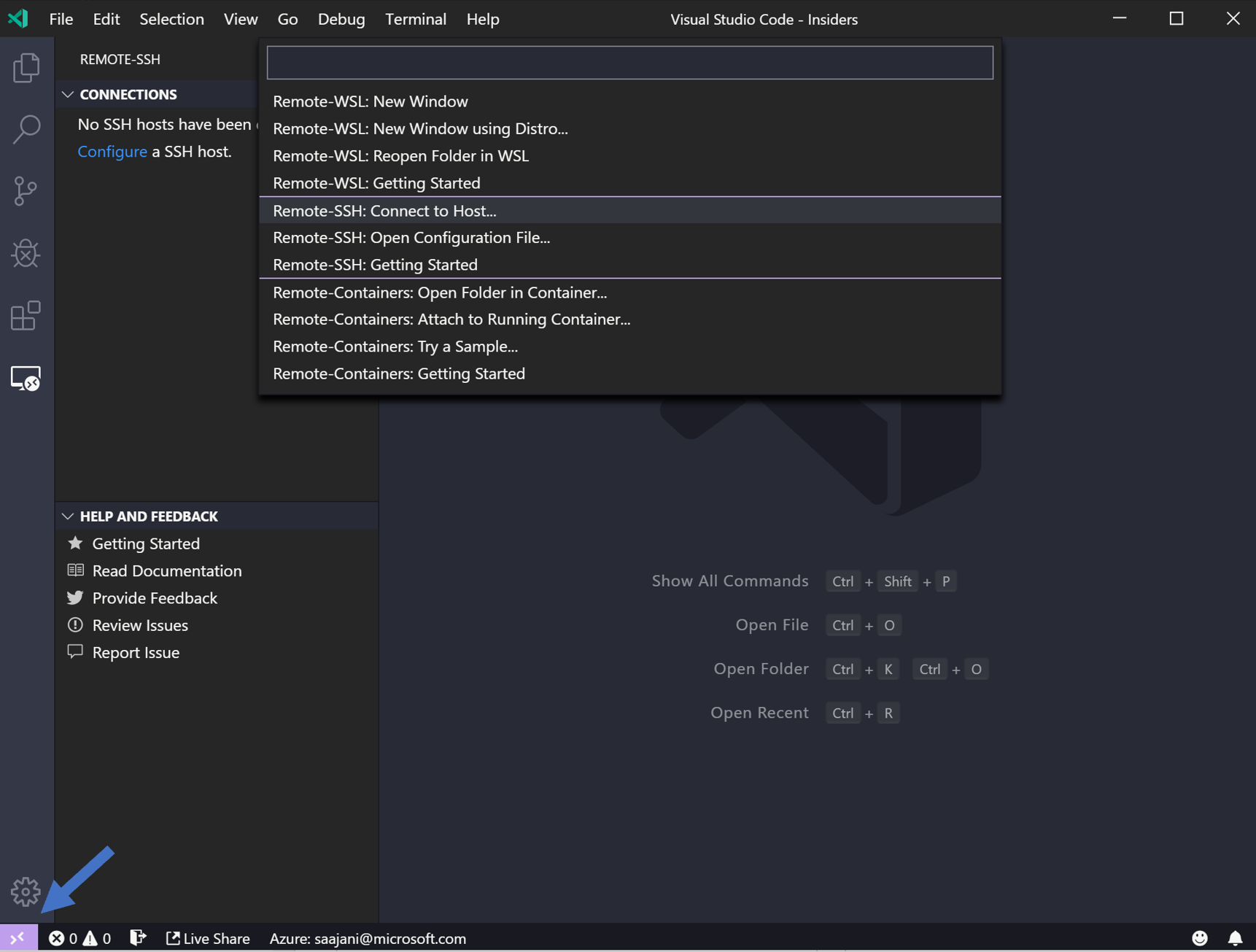Listen up, tech enthusiasts. If you've ever wondered how to connect to remote servers from your browser without needing fancy software, you're about to dive deep into the world of remote SSH web. Picture this: you're traveling, your laptop is nowhere in sight, but you need to manage your server—what do you do? That's where remote SSH web comes in, saving the day like a superhero in a hoodie. This isn't just some nerdy tech trick; it's a game-changer for modern IT professionals.
Now, let me tell you something—you don’t have to be a coding wizard to understand this stuff. Remote SSH web allows you to access your servers securely through a browser, and it’s easier than you think. No more wrestling with clunky desktop apps or worrying about downloading software on every device you use. Sound interesting? Stick around because we’re about to break it all down for you.
Before we jump into the nitty-gritty, let’s set the stage. Remote SSH web isn’t just a buzzword; it’s a practical solution that’s gaining traction in the tech world. From developers managing cloud infrastructure to sysadmins keeping servers humming, this technique has become indispensable. So, if you’re ready to level up your tech skills, keep reading!
- Anissa Jones A Rising Star In The Entertainment Industry
- Comprehensive Remoteiot Platform Tutorial Your Gateway To Iot Mastery
What Exactly is Remote SSH Web?
Here’s the deal: SSH, or Secure Shell, is like the golden key to your server’s treasure chest. It’s a secure protocol that lets you remotely control and manage servers. But here’s the twist—remote SSH web takes it up a notch by allowing you to do all that through a web browser. No more SSH clients or terminal windows hogging your screen. Instead, you can log in from any device with an internet connection and a browser.
This approach is especially useful when you’re on the go or working from a device where installing software isn’t an option. Think about it—your phone, a friend’s computer, or even a public terminal can become your command center. With remote SSH web, you’re no longer tethered to specific hardware, giving you ultimate flexibility.
Why Should You Care About Remote SSH Web?
Let’s face it—technology is all about convenience, and remote SSH web delivers that in spades. Imagine being able to troubleshoot a server issue from your phone while you're stuck in traffic or accessing critical files from a café during your lunch break. That’s the kind of freedom this tool offers.
- Remote Iot Monitoring Android Free A Comprehensive Guide For Seamless Iot Management
- Best Remoteiot Ssh Free Your Ultimate Guide To Secure Connectivity
Here’s a quick rundown of why you should care:
- Accessibility: Log in from anywhere, anytime, with any device.
- Security: Use encrypted connections to keep your data safe.
- Efficiency: Streamline your workflow without needing extra software.
- Cost-Effective: No need to invest in expensive SSH clients or software licenses.
For professionals who juggle multiple devices and work environments, this setup is a dream come true. Plus, it’s a great way to future-proof your workflow as more businesses move toward cloud-based solutions.
How Does Remote SSH Web Work?
Alright, let’s get technical for a moment. Remote SSH web works by leveraging web-based SSH clients that run directly in your browser. These clients communicate with your server using the SSH protocol, ensuring that all data exchanged is encrypted and secure. The magic happens through technologies like WebSockets or HTTP tunnels, which allow real-time communication between your browser and the server.
For example, popular tools like WebSSH or GateOne provide interfaces that mimic traditional terminal windows but are completely web-based. You simply enter your server’s IP address, credentials, and voilà—you’re connected. It’s like having a virtual terminal in your pocket.
Key Components of Remote SSH Web
Let’s break down the essential components that make this possible:
- Web-Based SSH Clients: Tools like WebSSH or AjaxTerm act as the interface between your browser and the server.
- Encryption Protocols: SSH ensures that all data transmitted is secure and protected from prying eyes.
- Browser Compatibility: Most modern browsers support the technologies needed for remote SSH web, so you’re good to go with Chrome, Firefox, or Edge.
By combining these elements, remote SSH web creates a seamless and secure way to interact with your servers from anywhere in the world.
Setting Up Remote SSH Web: A Step-by-Step Guide
Ready to get your hands dirty? Setting up remote SSH web is easier than you might think. Follow these steps, and you’ll be up and running in no time:
- Choose a Web-Based SSH Client: Popular options include WebSSH, Shellinabox, and GateOne. Each has its own strengths, so pick the one that suits your needs.
- Install the Client on Your Server: Most clients require installation via your server’s command line. For example, with Shellinabox, you’d run `sudo apt-get install shellinabox` on a Linux machine.
- Configure the Client: Set up the necessary configurations, such as port forwarding and authentication methods, to ensure secure access.
- Access the Client via Browser: Once everything’s set up, open your browser and navigate to the client’s URL (usually `http://yourserverip:port`). Enter your credentials, and you’re good to go!
Pro tip: Always use strong passwords and consider enabling two-factor authentication (2FA) for an extra layer of security.
Troubleshooting Common Issues
Like any tech setup, things can go wrong sometimes. Here are a few common issues and how to fix them:
- Connection Errors: Double-check your server’s IP address and port number. Make sure firewalls aren’t blocking the connection.
- Authentication Problems: Ensure your credentials are correct and that SSH is enabled on your server.
- Browser Compatibility: Try updating your browser or switching to a different one if you encounter issues.
With a bit of troubleshooting, you’ll be back on track in no time.
Security Considerations for Remote SSH Web
Security is a top priority when it comes to remote SSH web. After all, you’re accessing sensitive systems over the internet, so it’s crucial to take the right precautions. Here are some best practices to keep your setup secure:
- Use Strong Passwords: Avoid using common or easily guessable passwords. Consider using a password manager to generate and store complex passwords.
- Enable Two-Factor Authentication (2FA): This adds an extra layer of security by requiring a second form of verification, such as a code sent to your phone.
- Limit Access: Restrict who can connect to your server by setting up IP whitelisting or using SSH keys instead of passwords.
- Regularly Update Software: Keep your SSH client and server software up to date to protect against vulnerabilities.
By following these guidelines, you can enjoy the convenience of remote SSH web without compromising your security.
Popular Tools for Remote SSH Web
Now that you know the basics, let’s talk about some of the best tools available for remote SSH web. Here are a few standout options:
1. WebSSH
WebSSH is a simple yet powerful tool that lets you connect to SSH servers directly through your browser. It supports features like file transfers, terminal resizing, and customizable themes. Plus, it’s open-source, so you can modify it to suit your needs.
2. Shellinabox
Shellinabox is another popular choice, known for its ease of use and lightweight design. It’s perfect for beginners who want to get up and running quickly without worrying about complex configurations.
3. GateOne
GateOne takes things a step further by offering advanced features like session recording, multi-user support, and plugin integrations. If you’re looking for a more robust solution, this might be the tool for you.
Each of these tools has its own strengths, so choose the one that aligns with your workflow and technical requirements.
Real-World Applications of Remote SSH Web
So, how exactly can you apply remote SSH web in real-world scenarios? Here are a few examples:
- Remote Server Management: Sysadmins can use remote SSH web to monitor and manage servers from anywhere, ensuring smooth operations even when they’re away from the office.
- Cloud Infrastructure Maintenance: Developers working with cloud platforms like AWS or Azure can leverage remote SSH web to deploy applications and troubleshoot issues on the go.
- Emergency Access: In situations where traditional SSH clients aren’t available, remote SSH web provides a reliable backup solution for accessing critical systems.
These applications highlight the versatility and practicality of remote SSH web in modern IT environments.
Challenges and Limitations of Remote SSH Web
While remote SSH web offers many advantages, it’s not without its challenges. Here are a few limitations to keep in mind:
- Performance Issues: Depending on your internet connection, you might experience delays or lag when using web-based SSH clients.
- Compatibility Concerns: Not all browsers support the technologies required for remote SSH web, so you may encounter compatibility issues on certain devices.
- Security Risks: As with any remote access solution, there’s always a risk of unauthorized access if proper security measures aren’t in place.
Despite these challenges, the benefits of remote SSH web often outweigh the drawbacks, especially when used responsibly.
Future Trends in Remote SSH Web
The world of remote SSH web is evolving rapidly, driven by advancements in web technologies and increasing demand for remote work solutions. Here are a few trends to watch out for:
- Enhanced Security Features: As cyber threats become more sophisticated, we can expect to see more advanced security features in web-based SSH clients.
- Integration with Cloud Platforms: More tools will likely integrate seamlessly with cloud services, making it easier to manage infrastructure from anywhere.
- Improved User Interfaces: Developers are continuously working to make web-based SSH clients more user-friendly, with intuitive interfaces and customizable options.
These trends suggest that remote SSH web will continue to grow in popularity and functionality, shaping the future of remote server management.
Conclusion: Embrace the Power of Remote SSH Web
There you have it—a comprehensive guide to remote SSH web. From understanding the basics to exploring real-world applications and future trends, we’ve covered everything you need to know to harness the power of this incredible tool. Whether you’re a seasoned IT professional or just starting out, remote SSH web offers unparalleled flexibility and convenience.
Now it’s your turn to take action. Try setting up a web-based SSH client on your server and see how it transforms your workflow. And don’t forget to share your experiences in the comments below—we’d love to hear from you!
Until next time, stay curious, stay tech-savvy, and keep pushing the boundaries of what’s possible in the world of IT.
Table of Contents
- What Exactly is Remote SSH Web?
- Why Should You Care About Remote SSH Web?
- How Does Remote SSH Web Work?
- Setting Up Remote SSH Web: A Step-by-Step Guide
- Security Considerations for Remote SSH Web
- Popular Tools for Remote SSH Web
- Real-World Applications of Remote SSH Web
- Challenges and Limitations of Remote SSH Web
- Future Trends in Remote SSH Web
- Conclusion: Embrace the Power of Remote SSH Web
- Remote Ssh Access Raspberry Pi Not Working A Comprehensive Guide To Troubleshooting And Solutions
- Mastering Remote Iot Vpc Network A Comprehensive Guide For 2023


